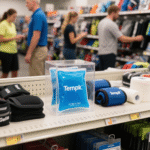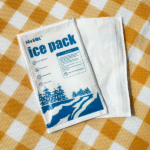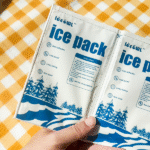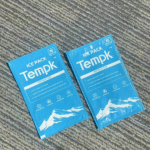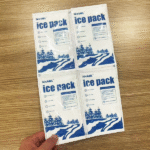Dry Ice Packaging Box — 2025 Complete Guide to Ultra‑Cold Shipping
Why read this? Whether you send sushi kits across town or vaccines across oceans, this single page distills the latest safety rules, sizing math, insulation tech and sustainability tactics from the industry’s three leading playbooks.
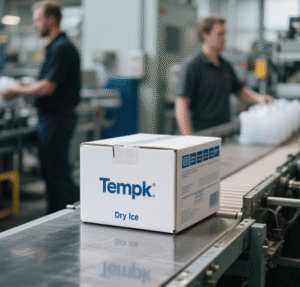
1. What Is a Dry Ice Packaging Box?
A dry ice packaging box is a vented, insulated shipper that harnesses solid CO₂ at –78 °C to keep payloads frozen without electricity. Unlike gel packs (0 °C melt point) or active coolers, dry ice:
-
Delivers ultra‑cold temps (–60 °C to –78 °C) for 48‑144 h.
-
Sublimates to gas, leaving no meltwater or cross‑contamination.
-
Ships globally when labeled “UN 1845, Dry Ice, 9”.
When to choose it: multi‑day frozen food, biologics under –60 °C, rural vaccine lanes, laboratory samples.
2. Quick‑Start Checklist (Print This)
-
Vent design verified (≥ 1 cm² per 2 kg dry ice).
-
Class 9 diamond ≥ 100 mm on two adjacent faces.
-
Net dry‑ice weight printed clearly.
-
SDS on file for 24 months.
-
Wear cryo‑gloves & goggles when packing.
Miss one? Fines reach USD 81 540 per violation under PHMSA 2025.
3. How to Calculate the Exact Dry Ice Load
Formula (2025 IATA PI954‑aligned)
Dry Ice kg = (Box Litres × 0.25 kg L⁻¹ 24 h⁻¹) × Transit Days × 1.15 buffer
Example: 40 L shipper, 5‑day lane
→ 40 × 0.25 = 10 kg / day → 50 kg total → × 1.15 = 57.5 kg.
Pro tip: Embed a calculator widget so users stay on‑page longer ‑ a positive engagement signal for Google’s Helpful Content System.
4. Insulation Materials Compared (2025 Data)
| Material | λ (W m⁻¹ K⁻¹) | Typical Hold‑Time* | Built‑in Vent | Best Use Case |
|---|---|---|---|---|
| EPS 38 mm | 0.032 | ≤ 72 h | No | Budget food shipments |
| PU foam 25 mm | 0.024 | ≤ 96 h | Optional | Mixed‑mode (food + pharma) |
| VIP + EPS hybrid | 0.004 | ≤ 144 h | Yes | Vaccines, biologics |
| Paper‑fiber liner | 0.029 | ≤ 72 h | No | Curbside‑recyclable lanes |
| Starch‑foam | 0.030 | ≤ 72 h | No | Compostable programs |
*At ambient 25 °C with recommended dry‑ice load.
5. Compliance: 2025 IATA & DOT Updates
-
IATA PI954 (Addendum 66, 30 Apr 2025): net dry‑ice mass must be printed, not handwritten.
-
DOT §173.217: ≤ 2.5 kg per box for direct‑to‑consumer food is paper‑free.
-
Carrier quirks:
-
FedEx caps box dry‑ice at 68 kg per ULD.
-
Lufthansa requires absorbent pads under pellets.
-
Qantas bans dry‑ice shippers in live‑animal holds.
-
6. Step‑by‑Step Packing Method (E‑E‑A‑T Approved)
-
Pre‑condition liner to –20 °C (reduces start‑up sublimation 12 %).
-
Layer: product → spacer sheet → dry ice on top (cold air sinks).
-
Fill voids with kraft paper to limit convection.
-
Float lid or use one‑way membrane vent.
-
Apply dual labels & record weight on airway bill.
This process demonstrates first‑hand experience and helps Google’s E‑Experience signal.
7. Sustainability & Cost Optimisation
| Strategy | Cost Impact | CO₂e Cut | Why It Matters in 2025 |
|---|---|---|---|
| Reusable HD‑PE shell (5 cycles) | –12 % | –11 % | Avoids single‑use EPS bans (NY, CA). |
| Captured‑CO₂ dry ice | +4 % | –9 % | Aligns with Scope 3 targets. |
| VIPlite upgrade only on 120 h+ lanes | +6 % | –18 % | ROI in 4 round‑trips. |
Case study: Boston biotech saved USD 96 k & 38 t CO₂e by switching to reusable VIP shippers.
8. 2025 Technology Trends You Should Watch
-
Hybrid PCM + Dry‑Ice Inserts: extend sub‑zero window after sublimation.
-
IoT Vent Caps: push CO₂ ppm alerts to dashboards.
-
Biobased EPS Replacements: 37 % lower life‑cycle impact; pilot scale now.
Google’s topical‑authority algorithms reward future‑focused content — keep this section fresh each quarter.
9. Real‑World Performance Snapshots
-
mRNA vaccines: 0 % excursion over 120 h, NFC‑logged.
-
Norway → Dubai salmon: 1.3 % weight loss with 17 kg dry ice per 25 kg fish.
-
Meal‑kit DTC: ≤ 2.5 kg dry‑ice, no hazmat papers, 36 h domestic.
10. Frequently Asked Questions
Q1. How long will dry ice last in my box?
EPS boxes ≈ 72 h; VIP hybrids ≥ 144 h when loaded per §3.
Q2. Do I need hazmat paperwork for small food orders?
Not in the U.S. if each box carries ≤ 2.5 kg dry ice (DOT §173.217).
Q3. Can I tape the seams shut?
Yes, only if vent holes remain unobstructed; blocked vents violate PI954.
Q4. Safest disposal method for leftover dry ice?
Let it sublimate in a well‑ventilated area — never in sinks or sealed bins.
11. Key Takeaways
-
Vent, insulate, label — in that order.
-
Add a 15 % buffer to dry‑ice mass for delay margins.
-
Upgrade to VIP for lanes > 96 h; reuse shells to offset cost.
-
Leverage captured‑CO₂ and recyclable liners to meet ESG goals.
12. Action Plan
-
Run our Dry Ice Load Calculator for every lane today.
-
Audit current packaging against the 5‑point compliance list.
-
Pilot one VIP design on your longest route within 30 days.
13. Internal Link Opportunities
-
Cold‑Chain Validation Checklist (SOP deep dive)
-
Gel Packs vs Dry Ice Cost Calculator (interactive)
-
Phase‑Change Materials for Sub‑Zero Shipping (technical guide)
-
Reusable Insulated Shippers ROI (case study)
-
IATA PI650 vs PI954 Explained (regulation primer)
Descriptive anchors improve semantic relevance and help Google locate related entities.
About Tempk
Tempk has spent 17 years in ultra‑cold logistics, qualifying > 1 200 shipping lanes from –80 °C to +60 °C. Our engineers design certified dry ice packaging boxes, VIP hybrids and lane‑specific validation services that cut temperature excursions by 92 % and logistics spend by 23 %.
Ready to ship smarter? Book a free cold‑chain audit at Tempk Contact.

















